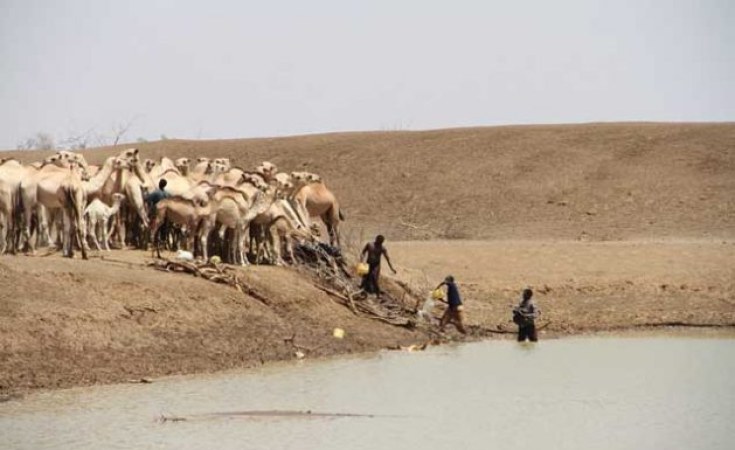Wajir, Kenya — Kenyan authorities say the ongoing drought that has left millions of people in need of food aid is also forcing tens of thousands of children in herder communities to drop out of school. Kenya declared a national disaster from the drought in September last year, but it could also be looking at a disaster for education.
Piles of dismembered animal carcasses can be found everywhere in the wake of the devastating drought that has left nearly 4.5 million people in need of aid.
In the village of Quley, in northeast Kenya's Wajir County, 11-year-old Nadir Mohamed and two of his seven siblings were pulled out of school in August to take care of the family's livestock.
Their mother, Hindiya Abdi, said the family was forced to move to greener pastures or else the animals would have died, and they would have starved.
"I would have liked the children to remain in school," she said in Somali. "But we needed their help to survive."
In the village of Karu, 17-year-old Sadik Dakane arrived at one of the few working boreholes in the area after trekking for two hours under the scorching sun to fetch the much-needed water.
"I left school when the drought struck," he said in Somali. "My father moved with his cattle to Somalia, leaving my mother and me behind."
The U.N. Children's Fund (UNICEF) said in a report last month that more than 400,000 Kenyan students have been affected by the drought and estimated that 66,000 have dropped out of school nationwide.
But the situation for children's education might be worse.
Sources told VOA that official estimates not yet released show 100,000 children have dropped out of school in just three counties in northeastern Kenya -- Garissa, Mandera and Wajir.
Hashim Elmoge, a local good governance activist, is concerned about the long-term impact on the kids' future.
"If this trend continues, the rate at which pupils are dropping out of schools, then we risk witnessing the largest drop-out rate, the life of an entire generation is at risk and you know what that will mean; producing a generation that does not have quality education," Elmoge said. "Then there will be a burden -- you know, drug abuse, insecurity, terror networks, radicalization and the whole nation is at risk."
To lessen the impact of the drought, government and aid groups have been sinking more boreholes and bringing emergency food to herders and their livestock.
However, Jilo Roba, the coordinator of the children department in Wajir County, said the needs are too great, and efforts to increase school attendance among the nomadic herder communities are taking a hit.
"The gains that have been made in the past are being reversed by the current severe La Nina drought," Roba said.
Officials and activists worry if rain doesn't come soon, more herder families will take their children out of school, and it could take months or even years to get them back in the classroom.


